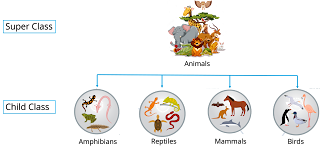Information technology, or IT for short, refers to the use of computers, software,
and other digital technologies to manage and process information. This can include
everything from developing websites and mobile apps to managing databases and networks.
IT is a constantly evolving field, with new technologies and innovations emerging all the time.
At its core, however, IT is about using technology to improve the way we live, work, and interact
with the world around us. Whether you're a computer whiz or a complete novice, there's always
something new to learn and explore in the exciting world of IT.
See Some Pros of IT
- Creativity: Blogging allows you to express yourself creatively and share your ideas with a global audience.
- Community: Blogging can help you build a community of like-minded individuals who share your interests and passions.
- Career opportunities: Successful bloggers can monetize their blogs and earn a living from their writing.
- Flexibility: Blogging can be done from anywhere with an internet connection, and you can set your own schedule and work at your own pace.
- Personal development: Blogging can help you improve your writing skills, build your confidence, and develop your knowledge in your niche.
Information technology (IT) is used in a wide range of areas:
Business: IT is essential for businesses of all sizes, from small startups to large corporations. IT is used to manage data, automate processes, communicate with customers and suppliers, and more.
Education: IT is used in education to facilitate distance learning, online courses,
and e-learning platforms. IT is also used to manage student records, grades, and other educational data.
Healthcare: IT is used in healthcare to manage patient records, track medical treatments, and monitor patient health. IT is also used to develop medical equipment and software applications.
Science and Research: IT is used in science and research for data analysis, modeling, and simulations. IT is also used to manage research data and to facilitate collaboration between scientists and researchers.
These are just a few examples of the many areas where IT is used.
With the increasing integration of technology in our daily lives, IT is becoming
ore and more essential to almost every industry and sector.
See Different fields in IT or Information Technology
What is Software Design ?
Software design is a process that computer programmers use to create a plan for building a computer program or application. Just like how architects create blueprints for building a house, programmers create designs for building software.
Different Types of Software Design
1. Object-oriented design: Object-oriented design is a popular approach to software design that views software as a collection of objects. Each object has its own state and behavior, and objects interact with each other through messages.
2. Functional design: Functional design is an approach to software design that focuses on the functions that the software system must perform. Functional design is often used for systems that are complex or have a large number of requirements.
3. Data-driven design: Data-driven design is an approach to software design that focuses on the data that the software system must manipulate. Data-driven design is often used for systems that are large or have a high volume of data.
Steps for Software Design
The steps in software design vary depending on the type of software being designed and the approach being used. However, some of the common steps in software design include:
i. Requirements gathering: The first step in software design is to gather the requirements for the software system. This includes identifying the users of the system, their needs, and their goals.
ii. Analysis: Once the requirements have been gathered, they need to be analyzed to understand the problem that the software system is trying to solve. This includes identifying the functional and non-functional requirements of the system.
iii. Design: The design phase is where the software system is actually designed. This includes creating a blueprint for the system that specifies the structure, behavior, and interfaces of the system.
iv. Implementation: The implementation phase is where the software system is actually built. This includes writing the code, testing the code, and deploying the code.
v. Maintenance: The maintenance phase is where the software system is maintained and updated. This includes fixing bugs, adding new features, and improving the performance of the system.
Some Key Points
Software design is a complex and challenging process, but it is also a very rewarding one. By creating well-designed software, software designers can help to create products that are useful, efficient, and enjoyable to use.
There are many different approaches to software design, and the best approach for a particular project will depend on the specific requirements of the project.
Software designers use a variety of methods and tools to create software designs, including UML (Unified Modeling Language), wireframes, prototypes, use cases, and functional specifications.
Software design is an important part of the software development process, and it can have a significant impact on the quality, cost, and success of a software project.





.png)


.png)



Comments
Post a Comment